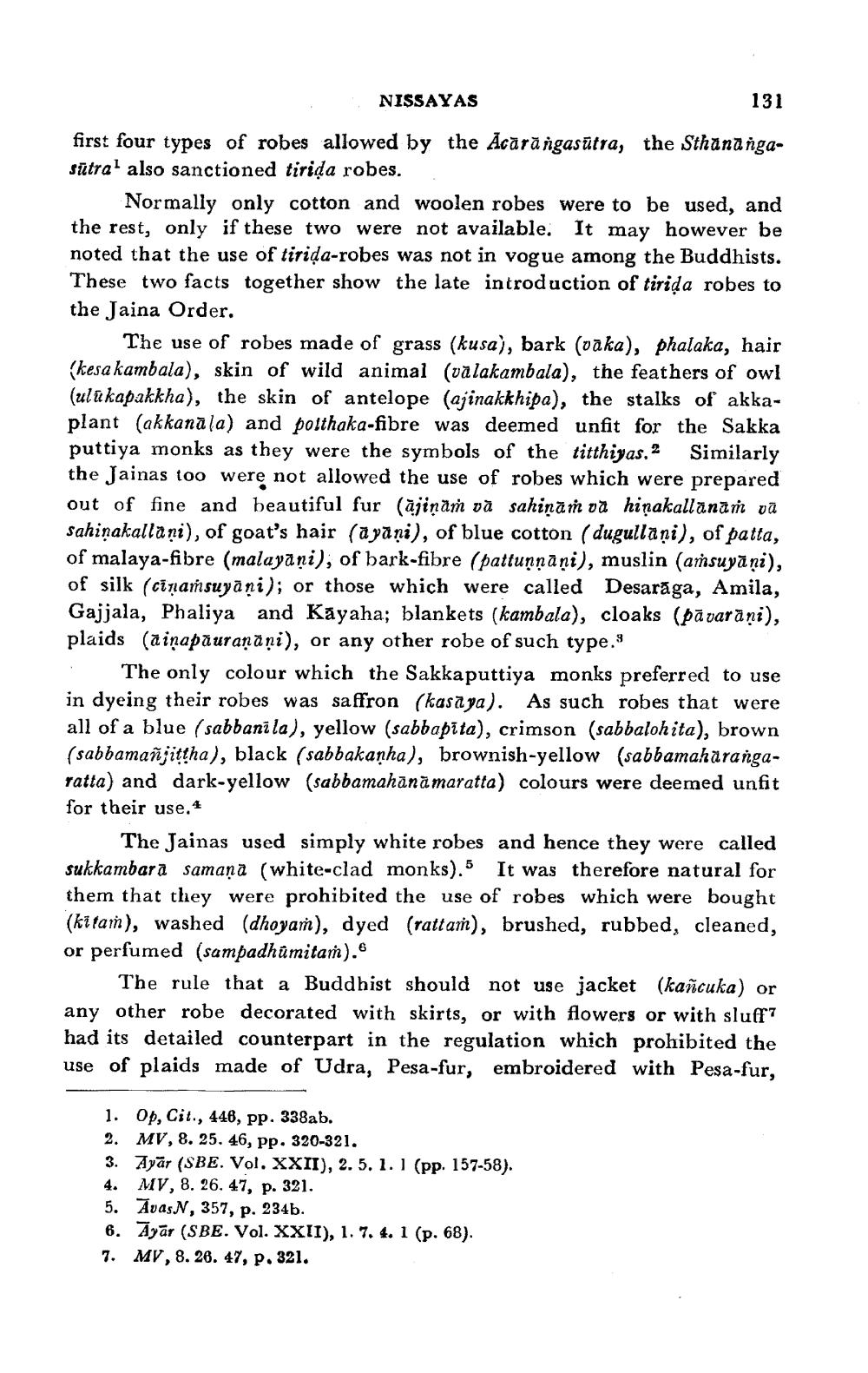________________
NISSAYAS
131
first four types of robes allowed by the Acārā ngasūtra, the Sthanangasūtra' also sanctioned tirida robes.
Normally only cotton and woolen robes were to be used, and the rest, only if these two were not available. It may however be noted that the use of tirida-robes was not in vogue among the Buddhists. These two facts together show the late introduction of tirida robes to the Jaina Order.
The use of robes made of grass (kusa), bark (vaka), phalaka, hair (kesa kambala), skin of wild animal (valakambala), the feathers of owl (ulakapakkha), the skin of antelope (ajinakkhipa), the stalks of akkaplant (akkanala) and polthaka-fibre was deemed unfit for the Sakka puttiya monks as they were the symbols of the titthiyas. 2 Similarly the Jainas too were not allowed the use of robes which were prepared out of fine and beautiful fur (ājiņāṁ và sahiņā noa hiņakallanāṁ vā sahiņakalla ni), of goat's hair (ayāni), of blue cotton ( dugullaņi), of patta, of malaya-fibre (malayani), of bark-fibre (pattunnāni), muslin (arsuyāni), of silk (cinamsuyani); or those which were called Desarăga, Amila, Gajjala, Phaliya and Kayaha; blankets (kambala), cloaks (pāvarāni), plaids (ainapäur anāņi), or any other robe of such type.' : The only colour which the Sakkaputtiya monks preferred to use in dyeing their robes was saffron (kasaya). As such robes all of a blue (sabbanila), yellow (sabbapita), crimson (sabbalohita), brown (sabbamañjittha), black (sabbakanha), brownish-yellow (sabbamaharangaratta) and dark-yellow (sabbamahānā maratta) colours were deemed unfit for their use.4
The Jainas used simply white robes and hence they were called sukkambarā samana (white-clad monks). It was therefore natural for them that they were prohibited the use of robes which were bought (kitam), washed (dhoyan), dyed (rattaṁ), brushed, rubbed, cleaned, or perfumed (sampadhumitam).
The rule that a Buddhist should not use jacket (kañcuka) or any other robe decorated with skirts, or with flowers or with sluffy had its detailed counterpart in the regulation which prohibited the use of plaids made of Udra, Pesa-fur, embroidered with Pesa-fur,
1. Op, Cit., 446, pp. 338ab. 2. MV, 8. 25. 46, pp. 320-321. 3. Zyar (SBE. Vol. XXII), 2. 5. 1. 1 (pp. 157-58).
MV, 8. 26. 47, p. 321. 5. AvasN, 357, p. 234b. 6. Ayar (SBE. Vol. XXII), 1. 7. 4. 1 (p. 68). 7. MV, 8. 26. 47, p. 321.




